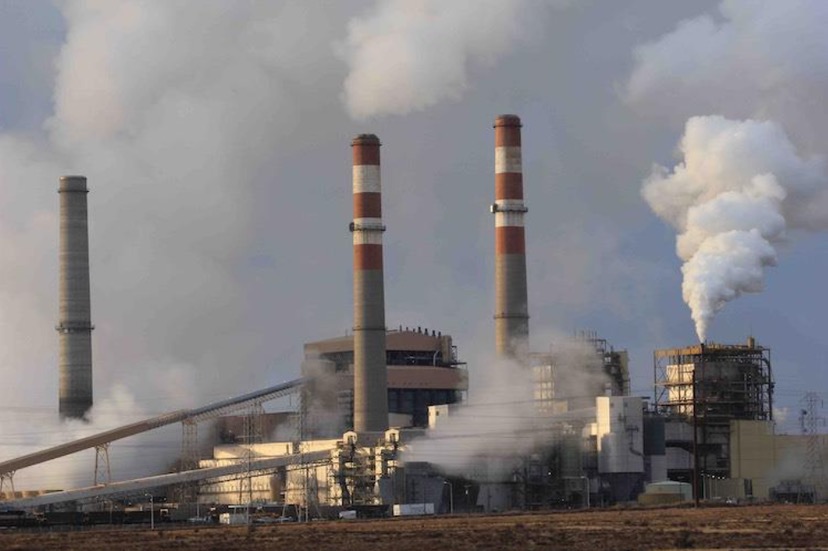By Allen Best, Big Pivots. This article appeared on Mountain Town News on March 4, 2021.
Coal to feed the roaring blast furnaces of Pueblo’s steel mill was being mined a century ago at dozens of hamlets in the foothills of Colorado’s Sangre de Cristo Range. Little remains today of those camps near Trinidad nor of the mine works at Crested Butte, Lafayette, and other one-time coal-mining towns.
We’re now in the midst of an even greater change. Get your photos quick. The smokestacks of the giant coal-burning plants that have generated most of our electricity during the last 50 years will soon start falling.
What will be Colorado’s last standing coal plant? It’s an open question. Xcel Energy, Colorado’s largest utility, wants it to be Comanche 3. It operates and is majority owner of the plant, along with Intermountain Rural Electric Association and Holy Cross Energy. In late March Xcel will submit plans to state regulators to keep the plant burning coal until 2040.
All other coal plants in Colorado will close by 2030, according to current plans. Colorado’s energy transition is — well, the metaphor of picking up steam doesn’t work as well as it used to. The state had a combined 4,412 megawatts of electrical generating capacity in December 2018.
Since then, Platte River Power Authority, Tri-State Generation and Transmission, Colorado Springs Utilities, and Xcel have all committed to closing plants by 2030. That leaves just one coal plant, 750 megawatts of Comanche 3, and Xcel wants to use just a third of the generating capacity beyond 2030.
One question mark was Pawnee, Xcel’s coal plant near Brush. Xcel wants to retrofit it to burn natural gas, as it did previously with Cherokee, the big plant north of downtown Denver. Xcel in late February also announced it wants to add 5,500 megawatts of new wind from Colorado’s eastern plains, but also storage and solar farms. This new farm-to-market network is to be knitted together by $1.7 billion investment in new transmission lines.
We’ve had energy transitions before. Diesel replaced coal in powering locomotives in only two decades. This transition is more urgent and more sweeping, from fossil fuels altogether. It’s partly driven by economics. Wind and solar prices have plunged 80% and 90%, and utilities have learned to effectively and reliably integrate more and more renewables. Now, coal has become the expensive fuel.
Adding urgency are the larger and fiercer wildfires, the deepening droughts, and other evidence of the disruptive and costly impacts of climate instability caused by our failure to tame our atmospheric pollution.
Look to Pueblo for the most vivid example of this big pivot in energy. The local steel mill ceased burning coal directly in the 20th century. Two huge coal-burning plants, Comanche 1 and 2, were constructed near the steel plant, part of a spree of new coal plants across Colorado from 1965 to 1984. Now, those two units near Pueblo will grow cold beginning in 2022 and 2025.
Most remarkable is how the Evraz steel mill will be powered. Construction has started on a solar farm covering 1,500 acres, an area almost five times the size of Denver’s City Park. The solar farm will have a generating capacity of 240 megawatts to produce ribbons of continuous rail from recycled steel. Coal will almost entirely be absent from the process.
Comanche 3, though, will still stand in the background of the steel mill. It’s had a troubled life. Since 2010, when it was completed, the $865 million plant has been down an average 91.5 days a year, including most of 2020. Last year the Colorado Public Utilities Commission decided the future of Comanche 3 was subject to investigation. The most damning statistic from that heavily-redacted report filed on Monday is that when approved by the PUC in 2004, the plant was forecast to deliver electricity at $45.70 per megawatt hour. The cost through 2020 was instead $66.25.
Xcel defends Comanche 3 as an efficient plant but also one that provides Pueblo jobs and Pueblo County taxes. Too, it may provide reliable electricity when winds cease and darkness falls — as long as it’s not down for repairs. There’s also this small fact: $633 million of Comanche 3’s value as of 2020 had not been depreciated. There are decades of payments left to be made. Will the PUC require Xcel ratepayers to continue paying off this debt? Or might a complicated financial device called securitization allow Xcel to exit the plant sooner?
Comanche may also be a place holder. So many questions remain about how to completely decarbonize electricity even as demand for it grows to replace fossil fuels in transportation and buildings. If a lemon, Comanche 3 may still be Colorado’s last standing coal plant. But with this one exception, the end of the era of coal-fired power plants is clearly on the horizon, at least in Colorado.
Long-time journalist Allen Best publishes at Big Pivots, an e-magazine that tracks the energy and water transitions in Colorado and beyond. Subscriptions are free at Big Pivots.

